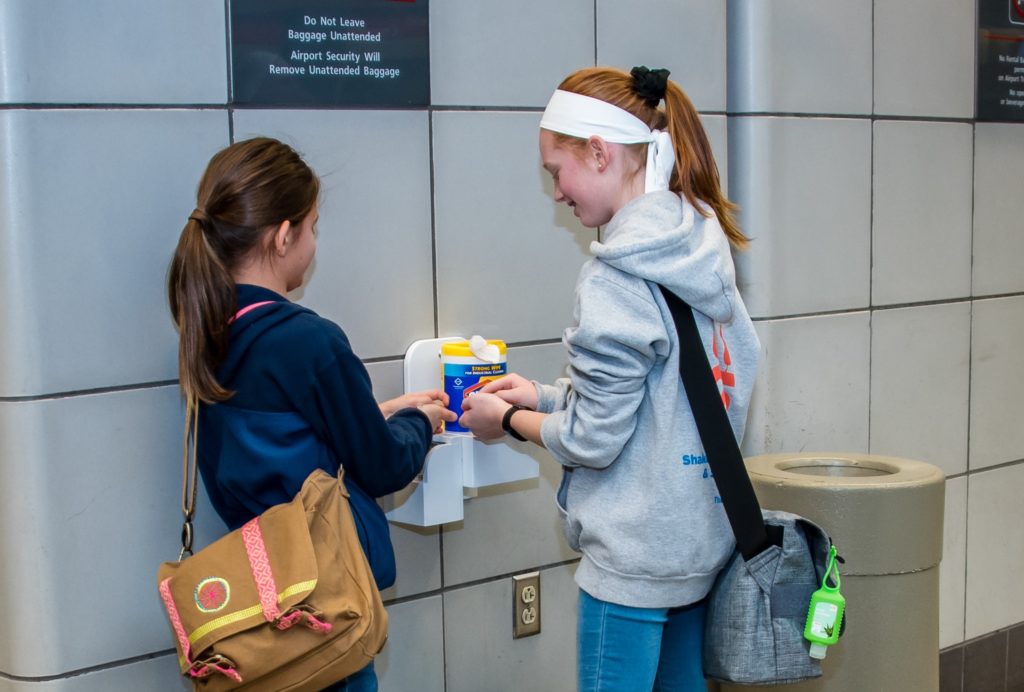Airports Step Up Efforts to Prevent Spread of Coronavirus
Aggressive cleaning programs, employee education among newest actions
By Matt Neistei
Published March 6, 2020
Read Time: 3 mins
As the coronavirus outbreak enters its fourth month, the aviation industry is taking more preventive safety measures to reduce the risk of contamination to passengers, employees and others.
At Pittsburgh International Airport, officials have instituted new healthy travel protocols to enhance deep cleaning routines in the terminal, including restrooms and other common areas. Crews have increased cleaning frequencies at all high touch-point areas, including handrails, elevator buttons, door handles, tables and chairs.
Crews are also cleaning the airport trains more frequently, including wiping down the hold bars and railings. Hand sanitizing stations will be installed at approximately 30 airport locations.
“As always, safety and security continue to be our top priorities,” said April Gasparri, senior vice president of Public Safety, Operation and Maintenance at Allegheny County Airport Authority. “Challenges are not new to us or the industry, and we are prepared. The airport and airline industry have faced the threat of communicable disease before and have developed, trained and executed emergency plans and drills.”
In addition to initiatives focused on passengers, the Authority created an intranet page for employees dedicated to updates on COVID-19, the official designated name for this strain of coronavirus.
Airport officials remain in regular contact with the federal Centers for Disease Control and Prevention, the county health department, and air carriers as part of a communicable disease action plan. Lines also remain open with city, county and state public safety officials.
“We are prepared, and we will continue to work with the community and industry leaders to respond as effectively and safely as possible,” said ACAA CEO Christina Cassotis.
About 90 employees of ISS Facility Services, the airport’s janitorial contractor, work in the airport each day cleaning the terminals, people movers and offices at Pittsburgh International. The crews use a hospital-grade disinfectant certified by Green Seal as environmentally responsible, a practice that began before the COVID-19 outbreak.

A pair of young travelers use a hand sanitizing station at Pittsburgh International Airport. (Photo by Beth Hollerich)
ISS crews meet at the beginning of every shift to go over safety protocols and priority areas. Employees wear gloves and goggles for protection, and are encouraged to offer feedback on spaces and features that may not be cleaned often enough.
“What’s changed for us is that typically our people are looking downward, looking at the floor and that area for the most intensive cleaning,” said Rege Koslof, ISS supervisor for PIT. “Now it’s a redirected focus. They’re looking at eye level for touchpoints like door handles, switch plates, handrails and things like that to clean.”
Many airports are taking measures similar to PIT’s, while working with industry groups and health agencies to develop best practices in dealing with the rapidly changing situation.
Seattle-Tacoma International Airport is adding 100 more hand sanitizer stations and janitorial staff is receiving additional training.
Atlanta-Hartsfield International Airport is placing signage to educate passengers and employees, and at Los Angeles International Airport, where a coronavirus screener contracted the illness, employees are cleaning public areas and restrooms at least once an hour.
Airports Council International–North America has set up a discussion board for members to talk specifically about COVID-19, and the International Air Transport Association, an airline trade group, has created a global Web portal to facilitate information sharing between airports and airlines.
As of March 9, the CDC reported 423 confirmed and presumptive positive cases of COVID-19 and 19 related deaths in the U.S.; 10 presumptive positive cases have been reported in Pennsylvania on Friday morning. Globally, confirmed cases are approaching 110,000 in 104 countries, with more than 3,800 deaths attributed to the virus.
Most of those cases and deaths have occurred in China, where the virus first surfaced in December. However, the virus has been confirmed in South Korea, Italy, Iran and other nations.
Watch
This Next
Read
This Next





